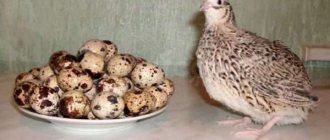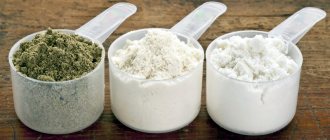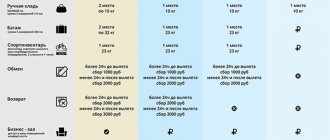Breastfeeding is the best option for a baby, and conscientious mothers support this method of nutrition in every way.
But there are situations in life when a mother must leave her child for a certain time or there is a need to create her own milk bank.
Then every competent and caring mother is obliged to familiarize herself with the rules for storing expressed milk. Read the article about how long breast milk can be stored in the refrigerator.
General rules for storing expressed milk
The storage method depends on the prospects for using the expressed product. There are several options:
- at room temperature - if you feed for 6-8 hours;
- in the refrigerator - if you are making a daily supply for a nanny or grandmother during your absence;
- in the freezer - if you decide to create a strategic reserve in case of loss of milk, voluntary cessation of feeding or long-term absence.
The rules for handling expressed milk are the same for all storage methods and every expectant mother, and especially those who have given birth, should learn them by heart:
All manipulations with the product, container and milk collector (breast pump) must be carried out only with washed hands.- Store milk only in specialized containers, hermetically sealed and sterile.
- It is mandatory to sign all containers filled and prepared for storage: date and time of packaging.
- The volume of one container is equal to one meal, is packaged at a time and does not tolerate any additions.
- Strictly observe storage periods.
If everything is done responsibly and strictly according to the rules, your baby will always have milk for feeding and for preparing cereals or additional nutrition.
What is the best way to store expressed milk?
— Storing breast milk is recommended in glass bottles, plastic containers or special bags (without bisphenol A).
“Containers containing bisphenol A, which has been found in some plastic containers (including baby bottles), should be avoided based on strong evidence found of its negative effects on the endocrine system. Caution should be exercised when using containers containing bisphenol S, an alternative to bisphenol A, as it may also have harmful effects."*
— The container in which the milk will be stored must be tightly closed. — It is advisable to write the freezing date on the container for expressed milk if long-term storage is expected.
How long can expressed milk be stored in the refrigerator, at room temperature and other conditions?
- At room temperature (from +16C to +27C) milk can be used within 4–8 hours. In the range from +27 C to +32 C, the permissible storage time is 4 hours.
- In a thermal bag (at a temperature of +15 C and below) it can be stored for up to 24 hours.
- In the refrigerator (from +4 C and below), the optimal shelf life of milk is 4 days, up to 8 days are allowed if cleanliness is maintained.
- In the freezer compartment of the refrigerator (at a temperature of -18 C and below), the optimal shelf life is up to 6 months, acceptable up to 12 months (according to The Academy of Breastfeeding Medicine, (ABM)).
- It is allowed to store expressed milk for up to one year in a separate freezer (from -17 C and below).
“Breast milk should not be stored in specialized medical containers, such as those used to collect urine or other body fluids, as there is insufficient evidence of their chemical safety and impact on the health of newborns; Only food-grade plastic containers should be used to store breast milk.”**
Of course, the longer the milk sits, the more beneficial components in it can be destroyed. It is better to use it within 3–6 months from the moment of freezing. This is another reason to sign containers.
The temperature at the back of the refrigerator or freezer is the most constant. This is the most secure place to store your milk containers.
Storing expressed milk: there are nuances!
- If you decide to freeze milk, you need to do it as soon as possible.
- Before placing milk in the freezer, you need to cool it in the refrigerator for 1-2 hours.
- You cannot add freshly expressed milk to already frozen milk; you should first cool the new portion.
- Milk that has already been thawed and heated cannot be added to frozen milk. Temperature changes will reduce the shelf life of the latter.
- Thawed and heated milk cannot be re-frozen; it must be discarded.
How long can it be in days and hours?
must cool for 4 hours at room temperature, but not higher than 25 ° C, before storing . After the time has passed, it must be packaged in a sterile container, signed and put on the refrigerator shelf.
If portions are prepared for delivery to a hospital or nursery, it is necessary to write on the packages not only the time and date of collection of the product, but also the first and last name of the child.
Do not store the product on the shelves of the door of a refrigeration appliance. Regular opening has a detrimental effect on the quality of milk, and a sudden change in temperature will significantly shorten its shelf life.
According to the recommendations of British pediatricians, sterile expressed breast milk can be stored in the refrigerator for no more than 7 days, provided the temperature in it is not lower than 4 °C.
Composition of milk
Despite the fact that the composition of milk may have different characteristics, depending on the health of the animal, its diet, and, of course, the breed, the general type of composition is still there. The product is enriched with calcium, magnesium, fluorine, potassium, phosphorus, iron, iodine and other macro and microelements, vitamins D, B1, B12, B2, A. About 86% of milk consists of water. The remaining 14% comes from proteins, minerals, milk sugars and milk fats.
And the calorie content of milk per 100 grams ranges from 25 to 85 kcal, depending on the processing method and the original composition.
Shelf life in the freezer
The temperature in the freezer is minus 18 °C, in such conditions the milk is frozen and can be stored for up to two years. Some American scientists claim that this is true, it can even lie there indefinitely, but it is better not to take risks and not check the assumptions of overseas doctors.
According to the standards approved by the Academy of Breastfeeding Medicine of the Russian Federation, the shelf life of breast milk when deep frozen is from 3 to 6 months. It is necessary to place containers with portions deep into the depths of the refrigeration unit, where the temperature is most constant and its shelf life will increase.
The packaging container should not be filled to the top; milk increases in volume when frozen and can burst the container.
How to store breast milk while walking?
During the cold season, you can keep containers of complementary foods in a bag or stroller. However, this cannot be done in summer and winter, because at high air temperatures the product may deteriorate.
Modern stores offer many accessories and devices that facilitate the process of transporting infant formula. An excellent example of this is thermal bags and thermoses for bottles, which allow you to feed your baby while walking and traveling. To make the product last longer, put bags with pieces of ice in the bag.
How to properly use frozen raw materials for feeding?
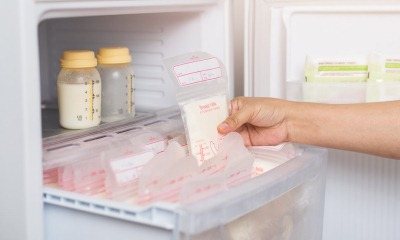
The first step is to place the frozen milk package on the refrigerator shelf for a day. Here the product will gradually begin to freeze and take on a liquid state.
In the second stage, the bottle with food is transferred to room temperature, now it can be placed under warm water or in a special warming device. The milk is heated to a temperature of 37°C , the baby is accustomed to eating this kind of milk from his mother’s breast.
The method of defrosting and heating breast milk in a microwave oven is not acceptable. This is dangerous and destructive to the product.
There are three main “don’ts” and every mother should remember them:
- you cannot freeze raw materials a second time;
- You cannot reheat defrosted milk;
- The remainder cannot be used for the next feeding.
The child should eat the reconstituted milk within 2 hours; if this does not happen, it is better to cook porridge from the leftovers or pour it out without regret. The introduction of dangerous bacteria is much worse than losing a few grams of milk.
Another peculiarity of thawed expressed milk is its smell. This product often smells like soap or fish - this is normal.
Preparing to drink milk after freezing
When the time comes to feed your baby frozen milk, the first question that will arise is how to reheat it properly?
To begin, milk from the freezer needs to be placed in the main chamber of the refrigerator for about 12 hours.
It is very important - after the milk has been completely thawed, it is stored in the refrigerator for no more than 24 hours!
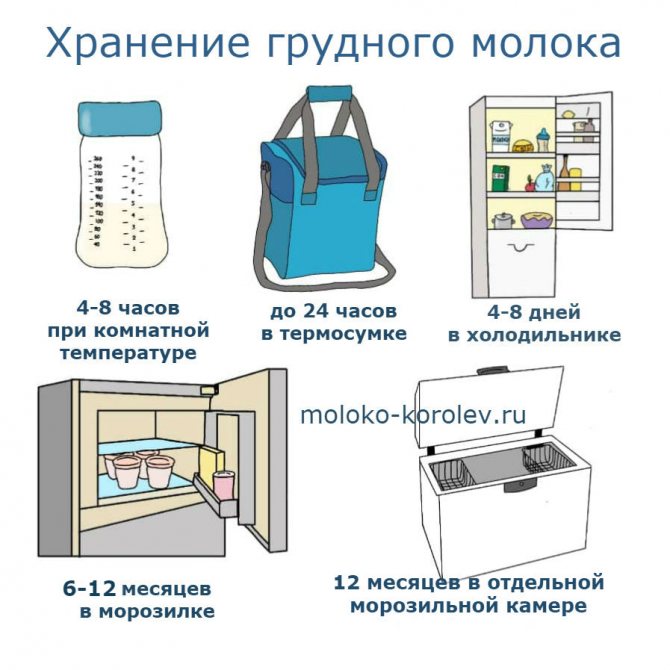
You cannot heat milk in a microwave oven or boiling water - this will negatively affect its properties! It is best to use a bottle warmer or simply place a container of milk in a mug of warm water. The optimal temperature for heated milk is no more than 37 degrees.
Before feeding, shake the container with milk a little, as it separates during storage. But don't shake too hard, otherwise the milk will foam and your baby will swallow air bubbles along with it!
Expressed milk that has been frozen may change color and smell. Mothers often notice that it smells like soap. This is normal. If all collection and storage rules are followed, this milk is absolutely safe for your child!
Attention: used milk, which may have received flora from the child’s mouth, must be used within an hour or thrown away!
Author of the article
Which container to choose?
Containers for long-term storage in refrigeration devices are sold in children's stores and pharmacies. You need to choose experimentally what is most convenient for you. There are the following types of storage packaging, each with advantages and disadvantages:
- Sterile disposable bags - they have a measured volume, take up little storage space, but have only one-time use and therefore their price is not justifiably high.
- Sealed packaging containers - made of safe material, can be sterilized, which means reuse is possible, but the disadvantages are that you need to carefully monitor the tightness of the container and again the price is too high.
- Bottles with sealed lids made of food-grade plastic - made of durable material that will withstand more than one sterilization, the lid closes with a screw thread and ensures tightness even in a horizontal position, convenient for defrosting and heating and feeding the child.
The benefits of milk
Disputes about the benefits and harms of milk have not subsided for many years. Most experts are still inclined to believe that milk is a very healthy product and can cause harm only in special cases related to the physiological characteristics of an individual person. Regular consumption of milk can protect the body from many diseases, including cancer. Various institutes are conducting numerous studies of milk, which are discovering more and more beneficial properties of this wonderful product.
Regular consumption of milk reduces the risk of cancer and cardiovascular diseases. Milk helps relieve swelling and lower blood pressure.
Milk is a good antioxidant and cold fighter. It also has a beneficial effect on a person’s overall health, strengthens the immune system and keeps internal organs in good shape.
Milk is recommended for consumption by children, as it contains all the necessary vitamins and minerals, and also promotes the proper development of the child’s body.
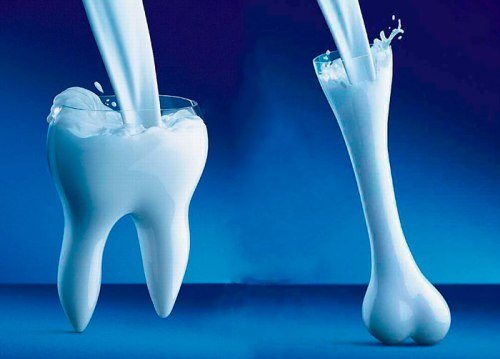
Milk has a positive effect on the nervous system and protects against insomnia. Helps restore the functioning of the gastrointestinal tract, reduces acidity and relieves heartburn. Reduces the impact of sour, spicy and salty foods on the body.
Drinking milk reduces the likelihood of developing diabetes. This product also reduces the feeling of hunger, which will be very useful for people on diets. The calcium in its composition reduces the amount of fat in the body, and linoleic acids prevent new fat deposits.
Milk strengthens bones and protects the musculoskeletal system, helps fight osteoporosis and prevent it in the future.
